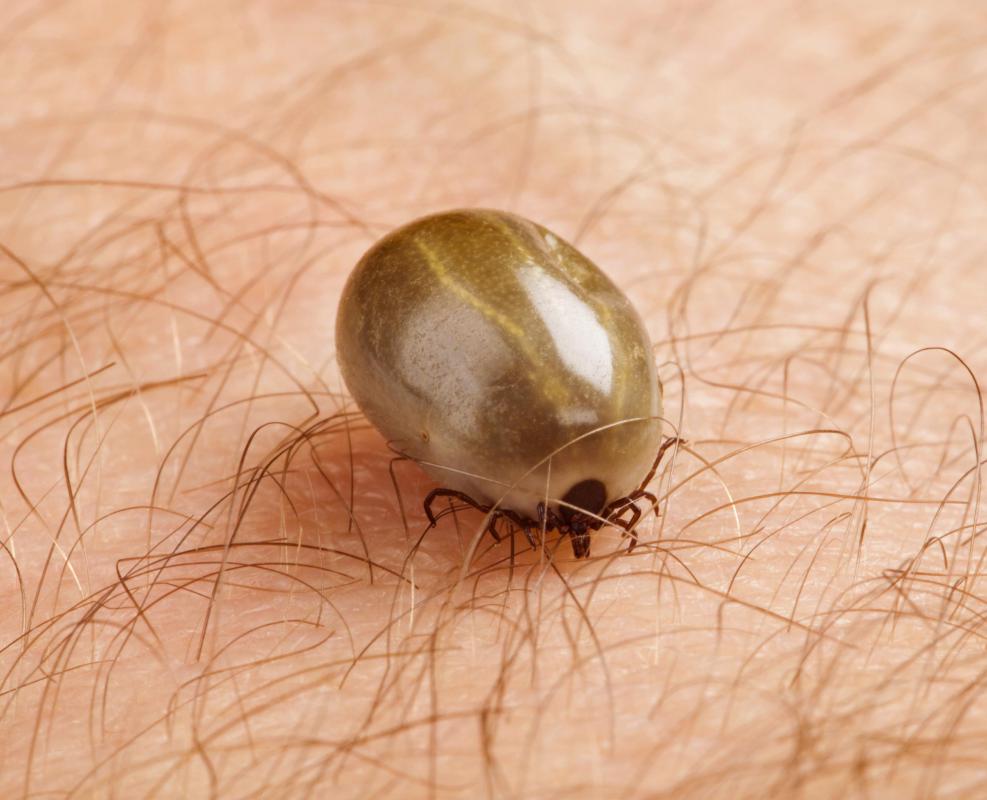At WiseGEEK, we're committed to delivering accurate, trustworthy information. Our expert-authored content is rigorously fact-checked and sourced from credible authorities. Discover how we uphold the highest standards in providing you with reliable knowledge.
What Should I Expect After a Lyme Disease Diagnosis?
Lyme disease diagnosis may occur when people first get ill, or later on, and the disease occurs generally after a person is bitten with a Lyme-infected tick. Those who are initially infected do not necessarily have immediate or noticed aspects of the disease, though most do. In particular, the bull’s-eye rash that follows a tick bite is a good indication, and many people find ticks attached to them and have them tested for Lyme disease so they will know to get treatment if a tick tests positive. As Lyme disease progresses, symptoms usually increase in expression and may get more severe, causing things like joint pain, memory loss, mood changes, and arrhythmias.
Essentially, there are two stages of Lyme disease which are usually called early and late. Treatment tends to depend on the stage at which Lyme disease diagnosis occurs. Catching this condition early is always desirable. Treatment is pretty easy and tends to include giving two to three weeks of oral antibiotics. Types chosen may depend on doctor preference, patient age and any patient allergies.

As medications are taken after a Lyme disease diagnosis, symptoms should begin to resolve. The majority of people get better with antibiotics. Doctors may schedule a follow up visit to assess a patient after treatment and make certain there are no lingering symptoms. Usually there are not and a patient’s condition is much improved to fully better.

Another treatment scenario may take place if people have late Lyme disease diagnosis. In these instances, patients are usually very sick, and might need intravenous (IV) antibiotics. Length of needed treatment could last from two weeks to four weeks. Given severe illness a person could require hospitalization, but even in late stages not all people feel severely ill. In this case it’s possible, they would have an IV antibiotics dose at a clinic or at a hospital each day, but get to remain home.

Unlike with treatment of early Lyme disease diagnosis, symptoms don’t always improve immediately. Some people might continue to have late stage symptoms even after antibiotic therapy has been completed. Others do start feeling better fairly immediately, but it usually may take some time to feel fully well.
One issue is what to do with people who suffer from the condition called chronic Lyme disease. The name is a little confusing because not all people who have this illness have suffered a tick bite from a Lyme-infected tick. It’s a collection of symptoms that are very much like late stage Lyme disease. For a while it was thought that daily antibiotics were the most beneficial treatment method, but now this is rejected. Due to its inflammatory or autoimmune tendencies, treatment after chronic Lyme disease diagnosis might result in some tactics used to treat autoimmune disorders such as giving drugs like prednisone. As yet, there are no clear guidelines on how to address this disease, though it is hoped that physicians or researchers will be able to discover something that helps in what can be a lifelong condition.
AS FEATURED ON:
AS FEATURED ON:















Discussion Comments
It may require different antibiotics, or combinations of antibiotics. One study by Infectious Disease doctors claimed that long term antibiotics did NOT help chronic Lyme, but their "long term" really wasn't long enough, from what you hear in the "lyme community" and people who have gone through treatment.
Also, prednisone, or steroids are strongly contraindicated. They can weaken the immune system and make one worse.
Post your comments